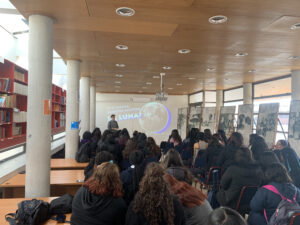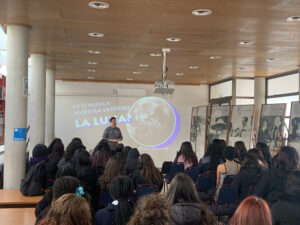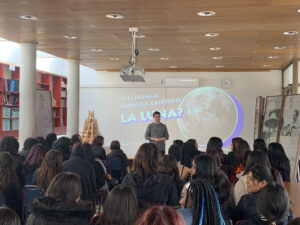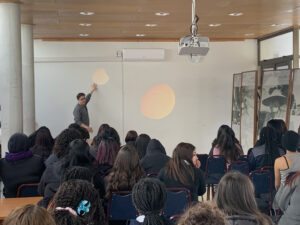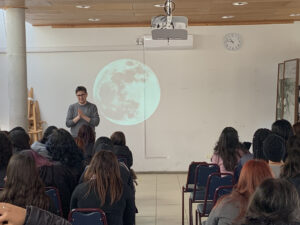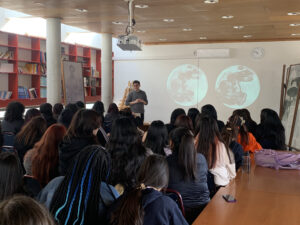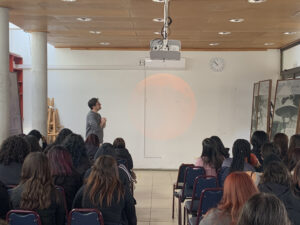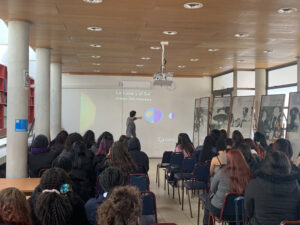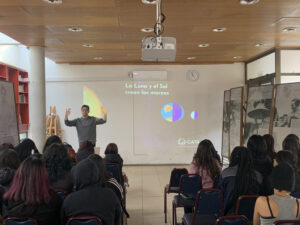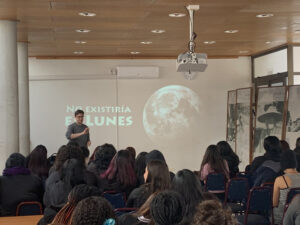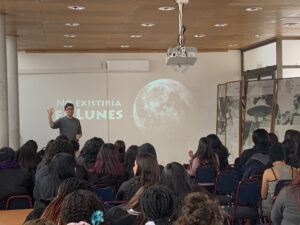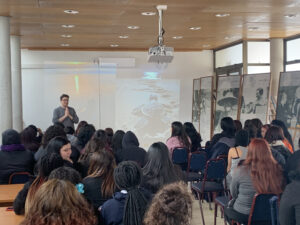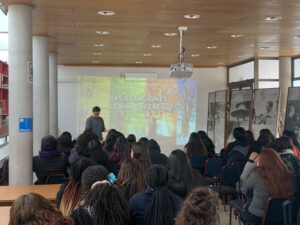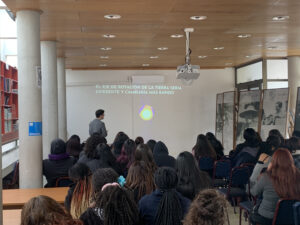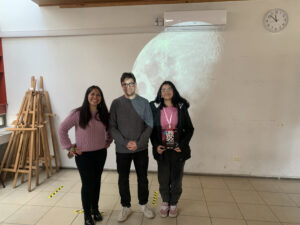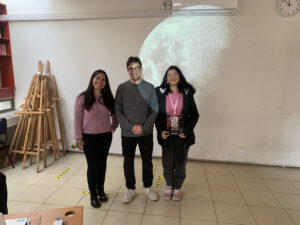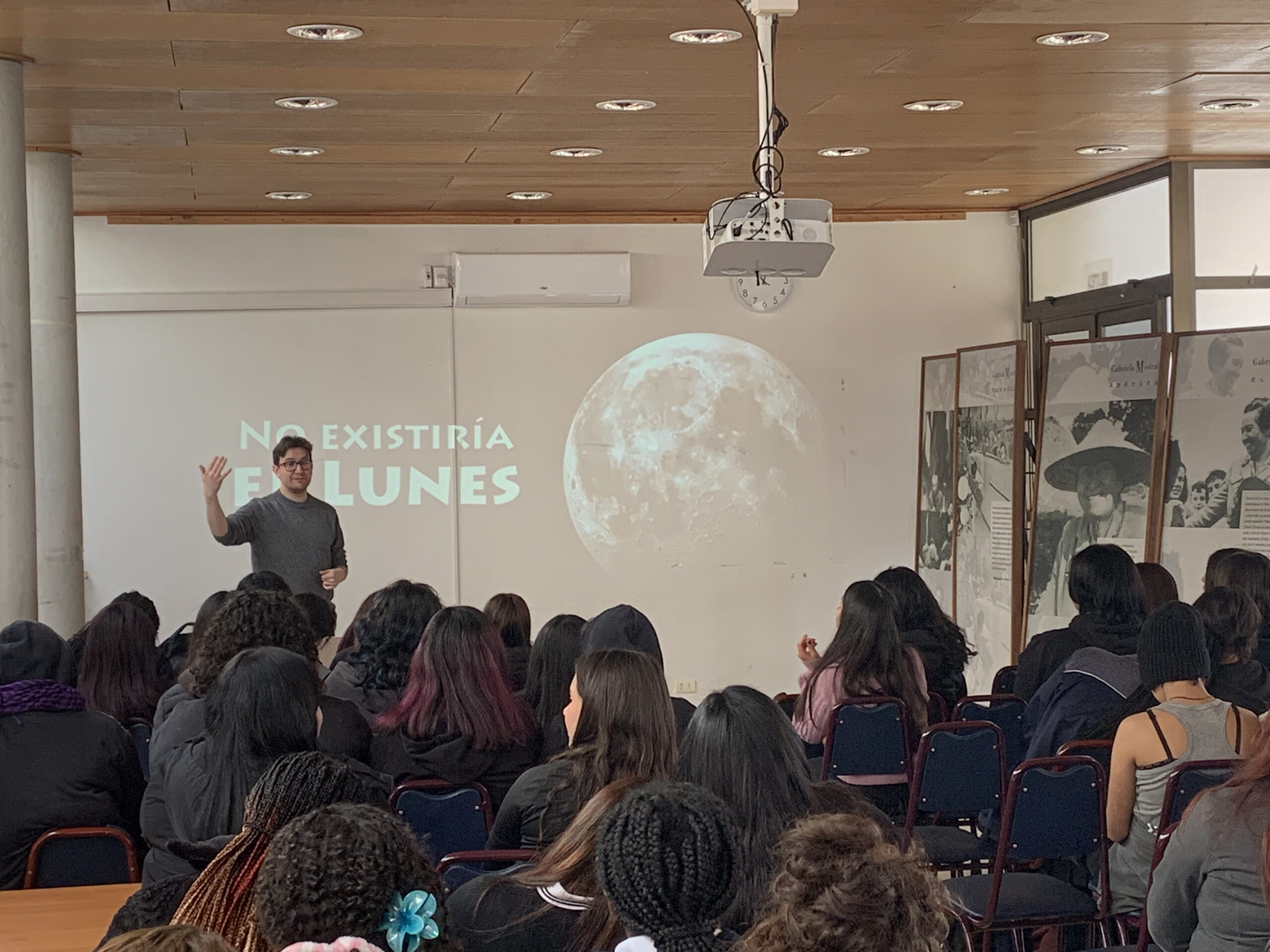
CATA brings lunar science to Teresa Prats High School
The event was organized by José Utreras, Content and Outreach Coordinator at our Center.
As part of its scientific outreach program, the Center for Astrophysics and Related Technologies (CATA) visited the Teresa Prats High School in the municipality of Santiago to present the talk “What if the Moon had never existed?”, aimed at secondary school students. The activity, which brought together around 70 students, is part of CATA’s guidelines to bring astronomical science closer to the school community and motivate new generations to explore the universe.
The talk was given by José Utreras, astronomer and Content and Outreach Coordinator at CATA, who explained in an educational and accessible way the hypothetical scenario of what Earth would be like if our natural satellite had never existed.
The scientist highlighted the interest shown by the students, noting that “it was a great experience, as it generated a lot of interest among the students from the outset and they had very incisive questions, such as how we know so much about the effects of the Moon on Earth and how we know so much about its past. It’s a very good topic because the Moon is part of our lives, which would be very different without it,” said Utreras.
For her part, Katherine González, a biology teacher at the school, appreciated the astronomer’s visit and the opportunity it provides to spark scientific vocations: “I think it’s extremely important that CATA comes to promote science, because it brings university and research science closer to schools. We are very grateful that this reaches students so that they are motivated to follow that path. This is a girls’ school, and we are encouraging them to study science-related careers.”
The teacher also highlighted how well the talk was received by the students, saying, “I thought it was fantastic, very relevant to the students’ interests. It sparked a lot of questions and generated a lot of interest. There are students at this school who are very motivated by astronomy, so we thought of them,” added González.
Recent news
-
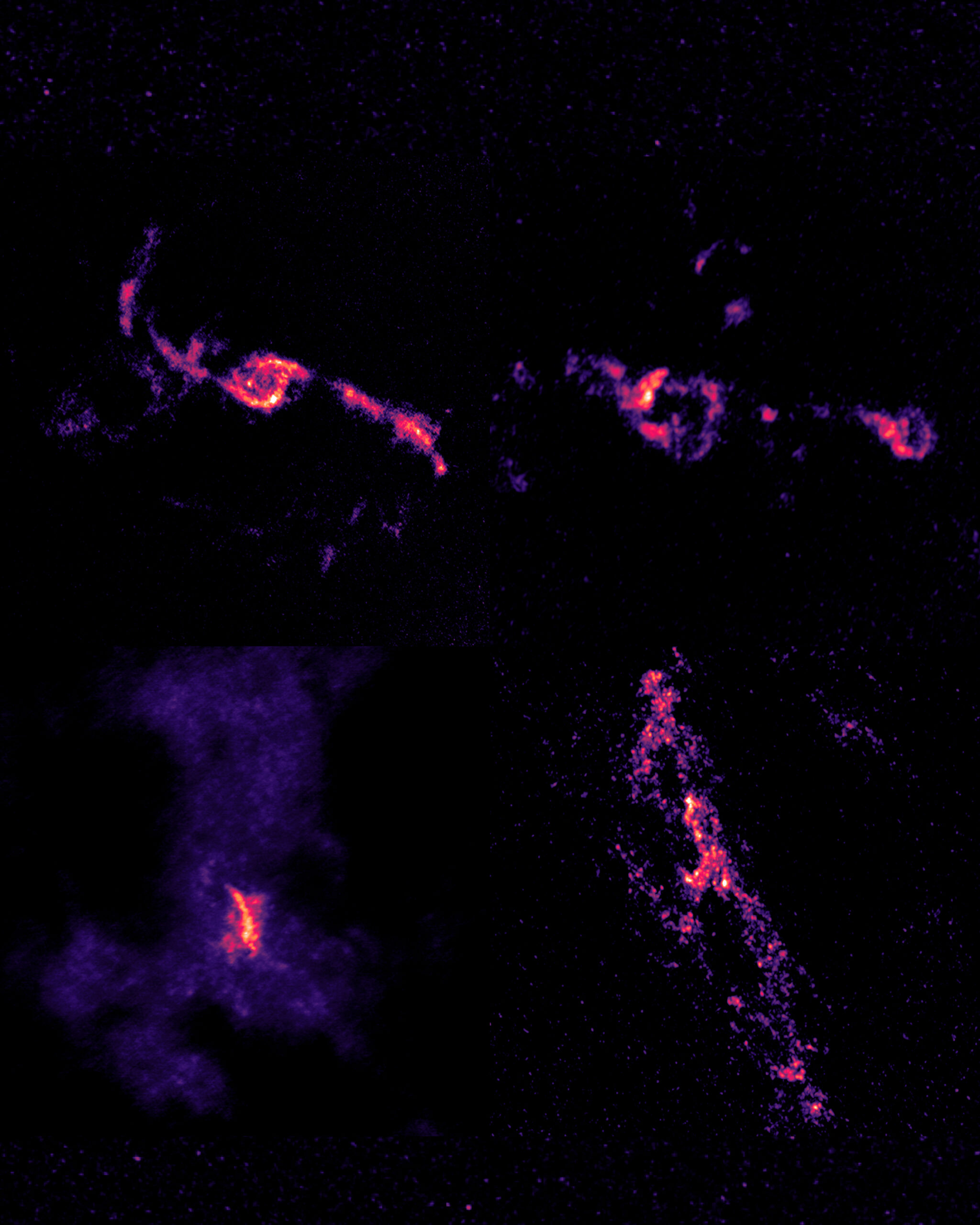 Publicado el: 22/12/2025International study reveals that black holes feed selectively
Publicado el: 22/12/2025International study reveals that black holes feed selectively -
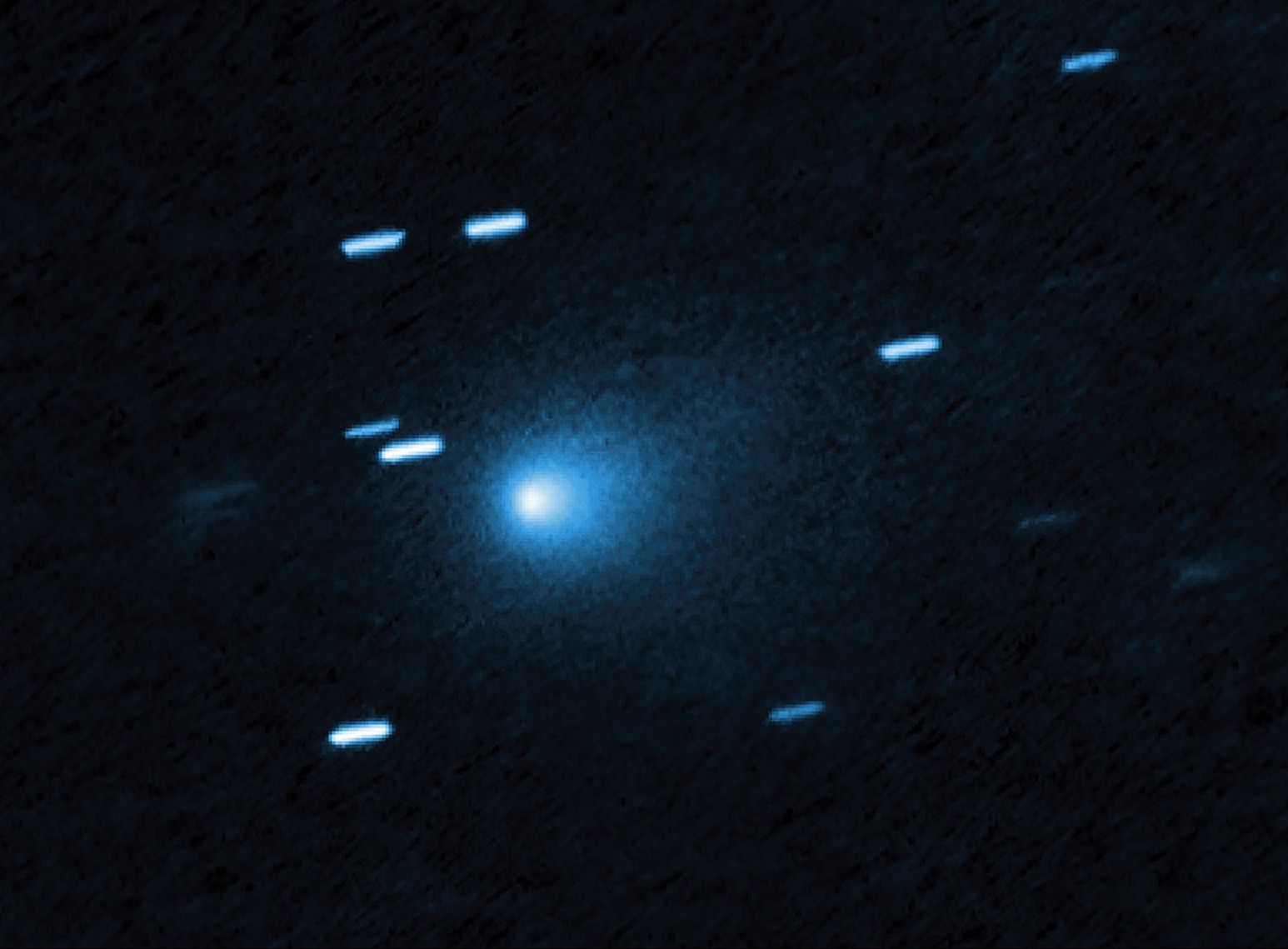 Publicado el: 20/12/20253I/ATLAS: the interstellar comet approaching Earth and what is known about it
Publicado el: 20/12/20253I/ATLAS: the interstellar comet approaching Earth and what is known about it -
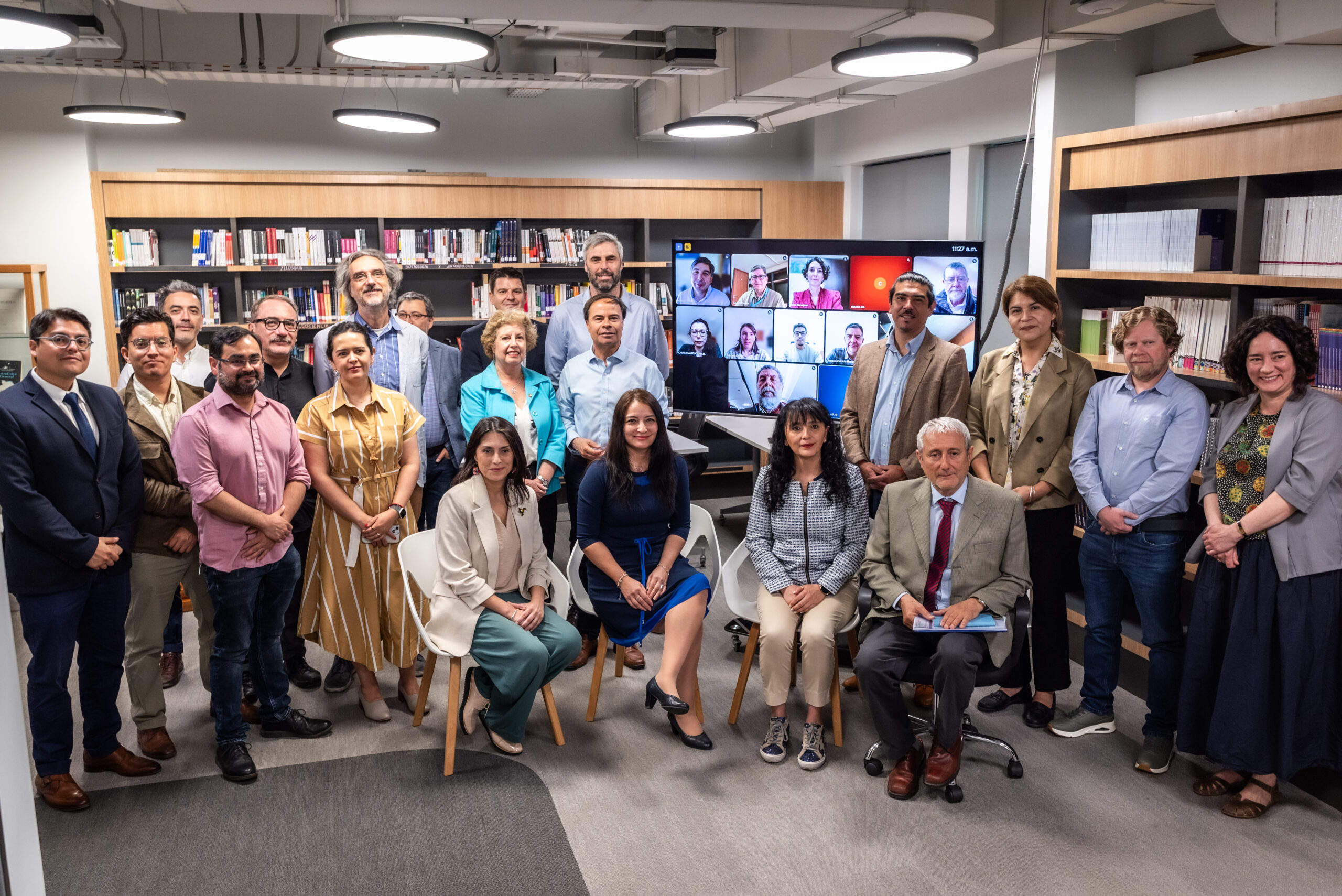 Publicado el: 18/12/2025Ministerial Advisory Committee for Astronomical Observation submits its final report
Publicado el: 18/12/2025Ministerial Advisory Committee for Astronomical Observation submits its final report -
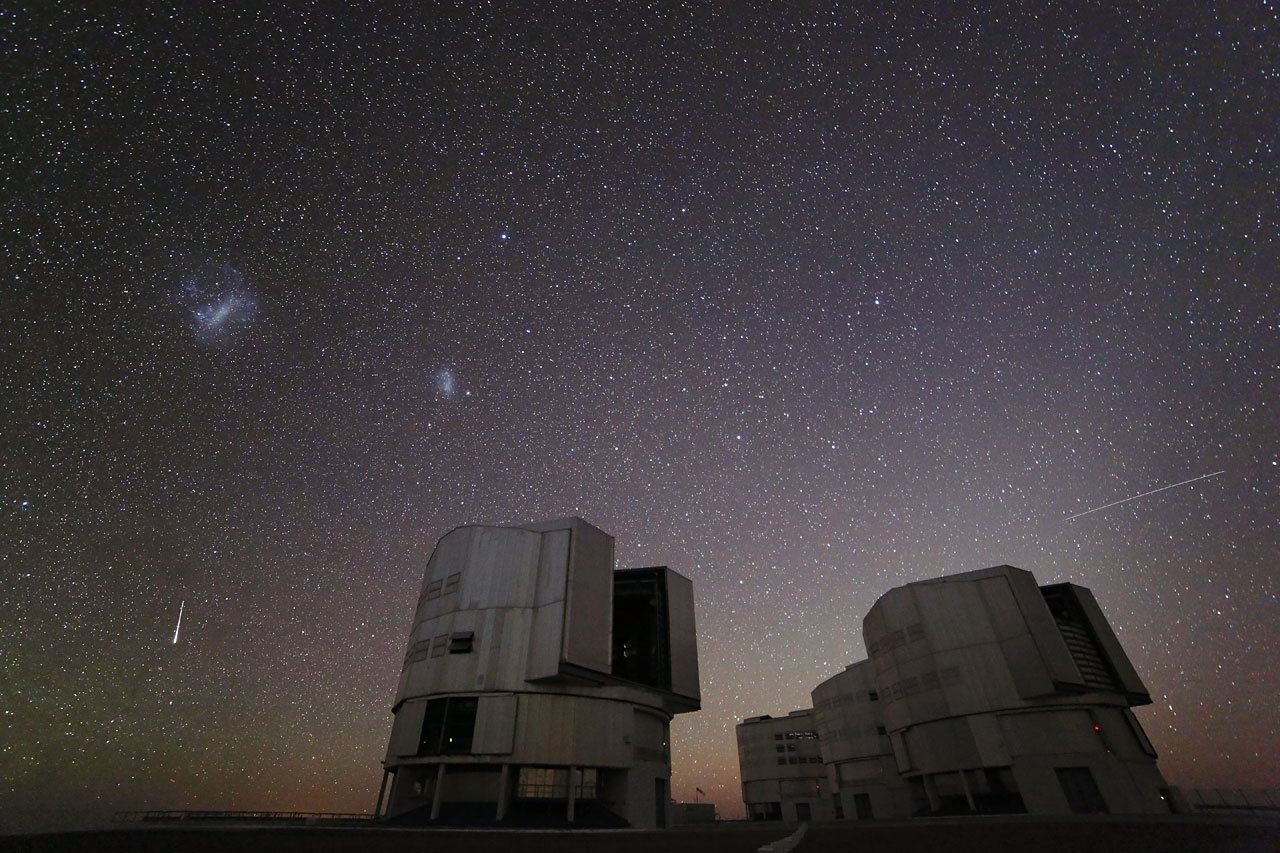 Publicado el: 13/12/2025Geminids 2025: facts and how to observe the last meteor shower of the year
Publicado el: 13/12/2025Geminids 2025: facts and how to observe the last meteor shower of the year -
 Publicado el: 12/12/2025Call for applications for the CATA Emprende 2026 program now open
Publicado el: 12/12/2025Call for applications for the CATA Emprende 2026 program now open
Categories list
- Acknowledgments 21
- Astrobiology 6
- AstroCluster 1
- Black holes 20
- Corporativo 58
- Cosmology 5
- Descubrimientos 23
- Disclosure 74
- Exoplanets 14
- Extension 7
- Galaxies 22
- Galaxies formation 6
- Inter y Transdisciplina 4
- Local Universe 17
- Publications 6
- Sin categorizar 34
- Solar System 23
- Stellar formation 8
- Technology 16
- Technology Transfer 18
